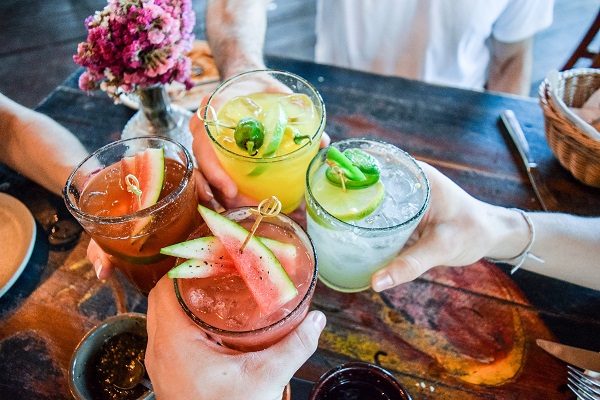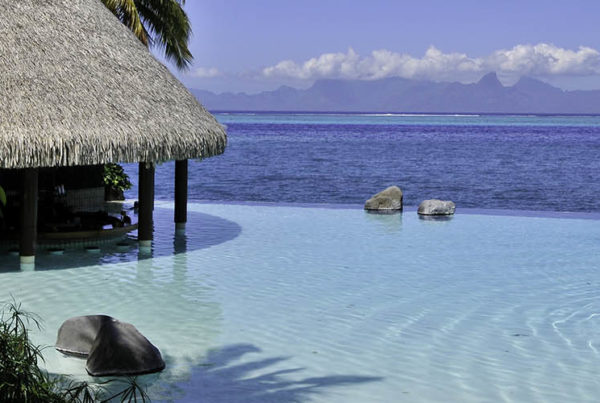The picture perfect island holiday
Manila is a perfect balance of East and West, featuring a welcoming atmosphere and a fascinating blend of cultures. Filipinos tend to be conservative by nature, with stronger ties to European ideals of Catholicism than the surrounding countries of Southeast Asia. Between the familiar spirit and national hospitality, it’s easy to feel at home within hours of landing here.
The Philippines are a rich archipelago of spice islands in a region that empires have fought over for centuries. Even today, it’s clear to see why everyone wanted Manila. Visitors are delighted with the surprising deals they can find shopping at the many local markets. Adventure seekers come for the historical wonder set amidst a landscape of stunning natural beauty. Snorkelers and divers come here to experience an underwater paradise unique for its magnificent variety of life and colors.
There are thousands of islands in the Philippines, but the majority live in Luzon, host to the bustling capital city of Manila. Manila is among the friendliest places on Earth, with locals who are genuinely interested in showing their guests around the pride of the Philippines. Visitors to Manila have an exciting adventure in store in this exotic metropolis known as “The Paris of Asia.” Remember to take your time, get used to the equatorial heat, and ease into your perfect island holiday.
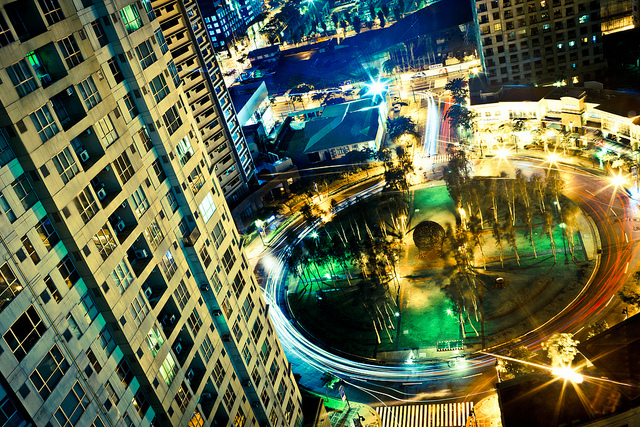
Source: Benson Kua
The language
Nearly everyone speaks English in Manila, thanks to 50 years of rule by the US and continuing close ties to the States. However, it will certainly benefit you to learn a bit of Filipino, the official language of the Philippines that most people refer to as Tagalog. The difference between Tagalog and Filipino basically mirrors the gulf between conversational English and the Queen’s English. Spoken Tagalog is a charming patois of English, Spanish, Chinese, and local dialects.
Here are just a few key phrases:
- Thank you! – Salamat!
- You’re welcome. – Walang anuman.
- Hello. (Literally: It’s a beautiful day!) – Mangandang araw.
- Yes. – Oo.
- No. – Hindi.
- I don’t know. – Hindi ko alam.
- How much is this? – Magkano ito?
- I don’t want it. – Ayoko.
- This tastes great/makes me happy. – Sarap nito.
- How are you? – Kamusta?
- I’m fine. – Mabuti.
A 30-second history of Manila
“Manila” means “the place of flowering mangroves,” and many grow in the marshy areas along Manila Bay. It’s the capital of the Philippines and the largest city on the island of Luzon. It’s been inhabited for 65,000 years, making it one of the oldest continuous settlements in the region. Nearby petroglyphs demonstrate that people have been making art here for many millennia.
The Malaysian dynasties were the first to see the value of Manila and set up a fortified settlement here to trade with Chinese merchant ships. In the middle ages, Manila was the jewel of the Brunei Sultanate and called “Selurong,” which you might see in the name of some cafes and shops in your travels. Mosques and Islamic culture continue to flourish in Manila, even though the city and Filipino culture is predominantly a Roman Catholic as a result of Spanish rule. From 1571 to 1898, Manila was a Spanish colony at the centre of the spice trade. At the end of the Spanish-American War, the Philippines were handed over to the United States. After World War II, the country gained independence and has flourished as a successful Asian trade centre ever since.

Source: Flickr
When to visit
July through October is typhoon season, when things can get very wet very fast. In November of 2013, Typhoon Yolanda hit Manila late in the season and caused a great deal of damage as the storm surged across the coastal city. December through February are the best times to visit for cool and dry weather. Holiday season starts in September and goes all the way through Mardi Gras the following year. The Santo Niño (Holy Child) festivals around Christmastime are truly astounding sights not to be missed.
However, there really is no tourist season as there are dozens of intriguing museums, local artisans, exotic street food, and karaoke bars scattered throughout Manila. Come and lose yourself in a stew of Spanish, Malaysian, Arabic, American, and Chinese influences, and get to know the youthful and optimistic people here. You may find Manila to be chaotic at times, but you will always find something new and fascinating to explore, no matter where in the city you look.
What you need to know
The Makati district in central Manila is where you will find the beautiful IHG hotels and restaurants clustered near the Manila Golf and Country Club. It makes a well-ordered base of operations for exploring the city and the sites beyond. Ayala Avenue is the central thoroughfare of the main financial district. This is where deals get done. Many shops cater to ex-pats and the top elite buyers in the region. At night, the streets of Makati come alive with night markets and a younger, club-hopping crowd.
What to do during a layover
If you only had 24 hours in Manila between flights, your absolute must-see destinations would be:

Source: Flickr
Morning
A whirlwind tour of history at the Ayala Museum.
You can drift through four floors of exhibits covering the history and culture of the Philippines. There are more than 60 tiny dioramas at the Ayala Museum summing up different periods from the country’s rich and varied past. These are perfect for kids and those who need a quick introduction to the country. Another fascinating area is the exhibit on sailing ships and silk clothing used throughout the centuries. Perhaps the most popular wing of the museum is the “Gold of the Ancestors” permanent exhibit. You can marvel at precious golden objects, necklaces, rings, bracelets, statuettes, and other jewellery pieces dating from before Spanish rule. Contemporary art is also touched on with a rotating series of modern exhibits. You will certainly work up an appetite and will want to try the museum’s Kabila Filipino Bistro. This is a good place to get introduced to traditional Filipino cuisine, with specialties such as Pork Bagnet (crispy fried pork stew), Sinuglaw (a form of ceviche), or Kare Kare Buntot (similar to paella with oxtail, peanuts, and eggplant).

Source: Flickr
Afternoon
Wander the ancient Spanish village of Intramuros
Lose yourself in the ancient walled heart of colonial Spanish Manila, featuring fortifications that are nearly 500-years old. Between ultra-modern Makati metropolis and the docks of Manila Bay stands 64 hectares of stones lost in time. Amidst ancient Spanish churches and villas, a horse-drawn carriage will take you past the marvels of engineering and delicate beauty that makes up Intramuros. The walls of Fort Santiago are nearly seven meters high and 2.5 meters thick, built to withstand everything from hurricanes to cannon-shot. San Agustin Church is a late 16th triumph chosen by UNESCO as a World Heritage Site. It must have been a massive undertaking at the time, and still is today. It’s the world’s first earthquake-proof building.
Evening
Dancing or people watch at Makati’s Giraffe Bar
Giraffe Bar is certainly among the top spots in the city to find the “See and Be Seen” crowd. Decorated in chrome and steel, it’s a perfect counterpoint to a day of historical sightseeing. There are bars for every kind of tourist in Makati, from Kipling’s, an upscale lounge for exquisitely aged single-malt scotch and cigars, to The Danish Connection, a fun and quirky bar where you can see the only Viking ship in Manila hanging from the ceiling. For more of the Spanish feel, head to Cafe Havana to samba and salsa dance until dawn. There are dance instructors on site, just waiting to guide enthusiastic amateurs. Clubbers can sample their unique take on the classic Cuba Libre or Caribbean entrees. They even have authentic Cohiba Esplendida cigars direct from Cuba.
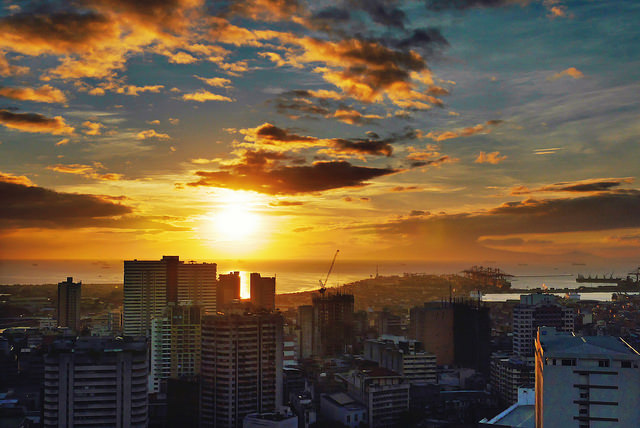
Image Source: travel oriented
What to do when you have a few days
When you have to time to relax, a little exploration from your picturesque Manila hotel will introduce you to a city that you can truly call your home away from home in Southeast Asia. Here are some ideas to begin building a holiday that is unforgettably unique.
1. Tour the City by Jeepney
The wildly coloured Jeepney’s crowding the streets of Manila have become an icon of Filipino culture. They’re also the easiest way to get around this bustling city, and often the best way to learn about the local scene. The very first Jeepneys were converted American jeeps left over after WW II. Today, however, they surprisingly resemble colourful Easter eggs. They don’t have air-conditioning, so they can be extremely hot, especially when they are crowded–as they always tend to be, since drivers are forever declaring they have room for “Just one more!”. Take a chance, put up with the heat, and pass your money down to the driver by handing it to the person sitting next to you. You won’t see much other than the perpetual traffic, but you will make fast friends and learn about where to go next.
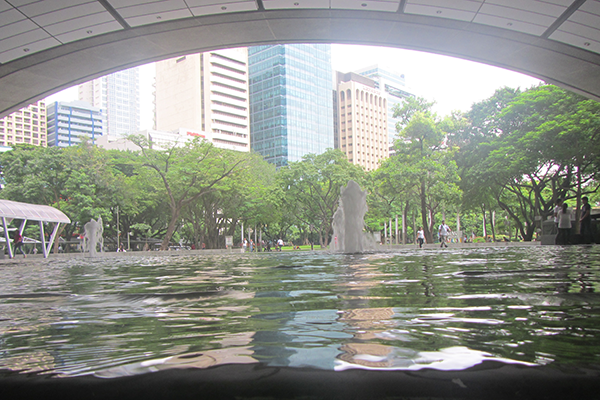
Source: Flickr
2. Ayala Triangle Gardens
Jet lag and culture shock tend to go together, but you can shake them both off by relaxing in a serene environment before your next adventure. In the centre of Makati is Ayala Triangle Gardens, a brilliant green garden of trees, flowers, and quiet natural beauty. More than 20,000 square meters of greenery in the centre of the city would be a striking enough change of pace, but this park is also frequently filled with light displays and original public art installations. There are a few restaurants in the Triangle where you can get your strength back and check your itinerary using a Wi-Fi hotspot.
3. The Manila Contemporary
It’s really not a bad idea to start each day with art. To really gauge the style of the region, visit the space that has become a leader in the local art scene. The Manila Contemporary was designed primarily to support influential Filipino artists, though it searches the entire region to find emerging talent with original artistic vision. This is a perfect place for beginning art collectors, who can comb through new talent during one of the city’s 12 annual group shows. Use this space as launching point to visit other art galleries in the region, such as Green Papaya Art Projects or The Light and Space Contemporary.
4. Mall of Asia
Everyone back home will be jealous when you return from your adventures, so smooth things over with souvenirs purchased at Mall of Asia, one of the 10 largest malls on Earth. Shops represent just one small corner of this monumental entertainment complex that highlights first-class restaurants, a Ferris wheel, a bowling centre, a 3D Digital IMAX theatre, a stage for live events, a skating rink, a Storyland for kids, and a 20-seater tram to get from one end to the other. In total, it covers 407,000 square meters and sees 200,000 people milling about every day. As if that weren’t enough, a two-level expansion is set to be completed by 2017.
5. Binondo, Manila’s Chinatown
North of the Pasig River from Makati is a neighbourhood that traces its roots all the way back to a Chinese trading village established in 1571, making it the world’s very first Chinatown. Binondo is everything you’re looking for in exotic culture and amazing cuisine. Adventurers and history buffs alike will be drawn to the 400-year old Buddhist temple dedicated to Kuang Kong, the God of War. Close by is the tower dedicated to Quan Yin, the Goddess of Peace, and a few steps away are the Catholic Basilica de San Lorenzo Ruiz and the Church of Santa Cruz. Foodies will delight in dim sum, Filipino bread, and the mysteriously thrilling Soup Number 5 served here, which is renowned throughout Asia as a powerful aphrodisiac.
6. Filipino Markets
There are great piles of chicken heads, live fish, and colourful candies everywhere you look at Filipino markets. Try some unusual tropical fruit or rice balls, or dig deeper into local culture with these masterpieces of traditional Filipino fare.
- Longganisa – sweet sausage
- Tocino – sweet cured pork
- Beef tapa – cured beef with fried eggs and garlic rice
- Champorado – chocolate-flavoured rice porridge
- Taho – soybean custard with caramelised brown sugar syrup
- Bicol express – stew made of coconut, hot chilis, shrimp paste and white fish
- Halo-halo – shaved ice, evaporated milk, and candied fruit, that is sometimes topped with flan or ube (purple yams)
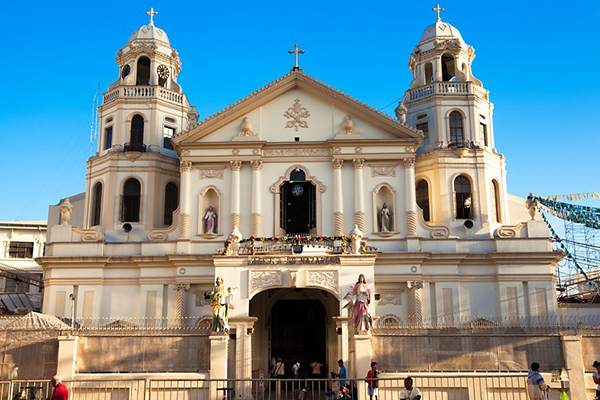
Source: Flickr
7. Quiapo Church and Market
The ancient and the modern worlds continue to mix here as the Quiapo Church, known as The Minor Basilica of the Black Nazarene or Saint John the Baptist Parish, still conducts mass in Latin. Outside the church is a marketplace filled with a sea of strange and curious crafts. You can find everything here, from religious icons alongside home-made dolls and delicate embroidery. Fridays at the market acquire a kind of carnival air, featuring hermetic lotions, saint candles, herbal concoctions, censers of incense, fortune-tellers, and tarot card readers.
8. Villa Escudero Plantations
On the southern end of Manila is a working coconut plantation that entertains visitors with folk music and dancing. Ride in a cart drawn by water buffalo (carabao) while you learn fascinating aspects of Filipino culture. Lunch is provided at the Labasin Waterfalls. In addition to the cultural shows, there’s a swimming pool and more familiar sports like tennis and billiards found here.

Source: Flickr
9. Manila Ocean Park
A country made up of thousands of tiny islands has a special relationship with the sea. This oceanarium celebrates aquatic life, and provides visitors with an aquarium filled with exotic fish, a coral reef protection centre, a shark tank, manta rays, and a glass underwater tunnel to observe ocean life from below. An aquatic-themed mall is attached that has several shops and restaurants.
10. Karaoke and KTV
No one leaves Manila without belting out a few favourites accompanied by lights, a lyric prompter, and musical accompaniment. Filipinos love to sing, and you will find out why when you make an evening out of it with friends, drinks, and ridiculous karaoke challenges. Most places charge per-head, per-hour for rooms holding up to 10 people. Red Box in Makati is one of the best places to find a mix of Western and Asian classics. The entrance fee covers all the music and a buffet. The nearby Music 21 Plaza Family KTV is popular in the ex-pat community. However, there are hundreds of karaoke bars here. No trip to the city is complete without a sampling of them.

Image Source: Stefan Krasowski
What to do during an extended stay
If you’re lucky enough to stay in Manila for a week or longer, than you have even more to explore. If you’re looking for an awe-inspiring experience, check out these seven day trips to make any week spent in Manila a trip to remember.
1. The Island of Corregidor
While at the waterfront, investigate tours to the island fortress of Corregidor in Manila Bay. Corregidor Island was an important site during Spanish rule and served a similar role for the defence of Manila during WW II. Full-day tours of the island include ferry passage plus a sound and light show inside Malinta Tunnel. On-island adventures include a rocket zip line, kayaking, and ATV rentals.
2. Banaue Rice Terraces
It’s very easy to see why UNESCO dubbed these rice terraces a World Heritage Site. Bring your camera and capture stunning imagery of what Filipinos call “The 8th Wonder of the World.” The terraces are more than 2000 years old, and many are still in use. These feats of primitive engineering were built by the indigenous peoples, the Ifugao. Spanning more than 200 meters in a massive bowl cut into the hillside, the terraces are fed by mountain streams. It’s an emotionally stirring site, especially when you tour them by helicopter.
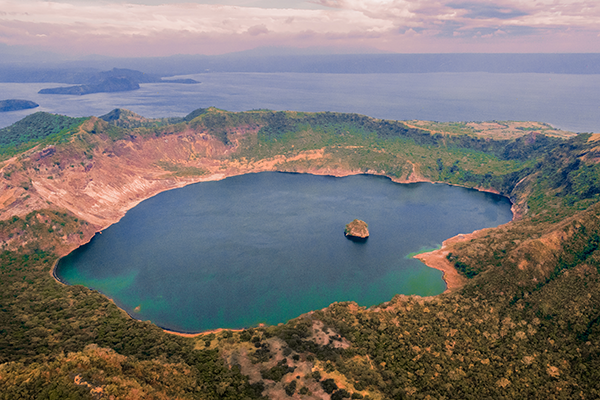
Source: Flickr
3. Tagaytay
Not more than two hours from your hotel in Manila stands the impressive Mount Taal. The little town of Tagaytay nearby bills itself as the site of the world’s smallest active volcano. You approach the volcano island by jumping on board a small boat and crossing the pellucid lake below.
4. Subic Bay
Have you ever wondered how long could you survive in the jungle? Find out just over an hour from Manila at the wild world of Subic Bay. At Subic Bay’s Pamulaklakin Trail, you brush up on your jungle survival skills with a course taught by the indigenous peoples, the Aetas. Learn how to make fire from dried leaves and fashion a bow with arrows. Afterwards, head over to Zoobic Safari to meet some tigers for dinner. In the only safari of its kind in the world, you can journey in a specially designed jeep through a tiger’s enclosure and watch them come to you. There’s also a marine animal show featuring much friendlier dolphins and sea lions.

Source: Flickr
5. Pagsanjan Falls
South of Manila, just across Laguna Bay, stand the Pagsanjan Falls. The entire region is an island paradise of caves, magnificent landscapes, and local villages. Ride a bamboo raft down the rapids, and discover if these waters can really heal any ill as the local legends say. Afterwards, tour the ancient towns along the way and sample authentic, traditional Filipino cuisine home made by locals. They’re always welcoming to visitors, and you’ll find this is a wonderful way of getting to know the larger culture.
6. Antipolo
Just east of Manila is a perfect day trip that combines art, nature, and local village life of Antipolo. On the way out of the city, there’s a mountain ridge with bars and cafes looking down on the metropolis in the valley below. It’s an amazing view, as well as a perfect way to orient yourself for later travels in the city. When you reach Antipolo, you’ll discover that it’s become a pilgrimage destination for Catholics because of its ancient church, Nuestra Señora de la Paz y Buen Viaje (Our Lady of Peace and Good Voyage) or simply the Virgin of Antipolo. Inside the church is a dark, wooden statue of the Virgin Mary with a halo of pure gold, originating from 17th century Mexico.
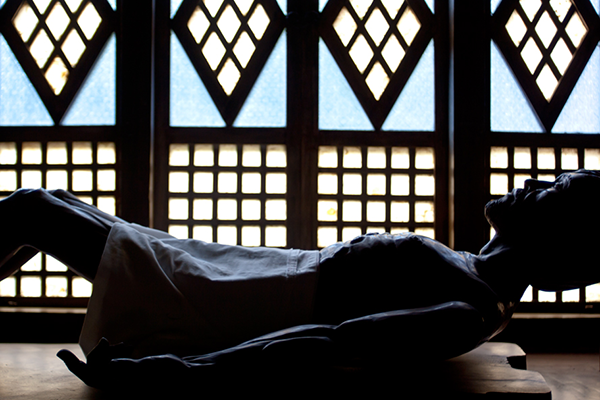
Source: Flickr
7. Angono
A little further east from Antipolo is the tiny and idyllic village of Angono, where there is a surprisingly modern collection of art galleries featuring contemporary Filipino works. After a traditional meal in the countryside, venture out to the caves of the Angono-Binangonan Petroglyphs. The simple images of people and lizards carved into the cave walls here are at least 5,000 years old. They predate Egyptian civilisation and are some of the oldest petroglyphs in the world.
Picture yourself in Manila
Manila is the most popular economic, cultural and historical center in the South China Sea that folds European and Southeast Asian influences into a spicy feast for tourists and expats. Great deals for shoppers, awe-inspiring natural wonders and intact historical sites provide plenty of reasons to return, year after year to these inexhaustible home for all kinds adventure.
The official tourist site of the country asserts that “It’s more fun in the Philippines.” Visitors soon discover this humble assessment is quite an understatement.



